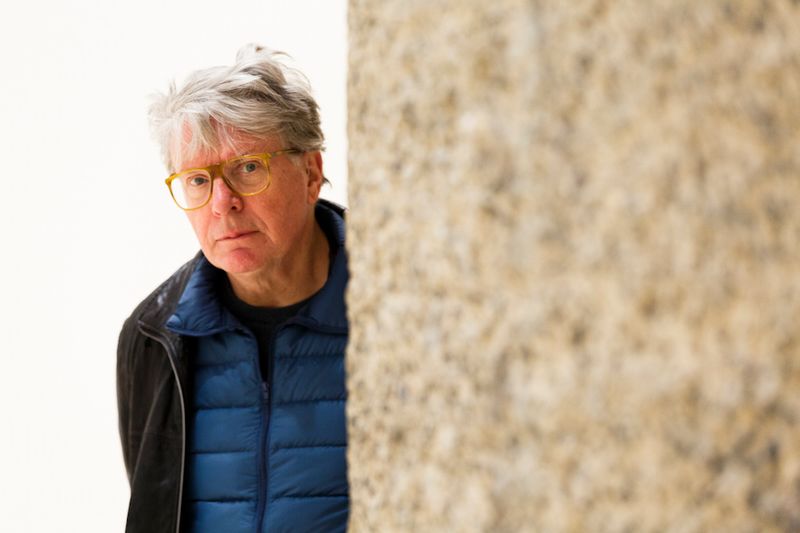
Roman Signer
25 January - 15 March 2008
London
'I simply think with material the same way that a poet takes words and turns them into sentences.' Roman Signer
While Roman Signer has remained a potent and influential figure in contemporary European artistic practice over the last thirty years, his works have rarely been presented to London audiences. A self-described 'emotional physicist', Signer harnesses elemental forces and the mechanisms of man-made contraptions to expressive effect, making exhilarating deadpan incidents from the experimental and tacitly dramatising our relationships with the basic stuff of existence. Carefully planned and executed, the artist’s works are nonetheless at the peril of chance, a vulnerability that endows the most Keatonesque scenarios with heroicism and intrigue.
Signer’s materials tend to be the immediate utilitarian objects and Swiss landscapes that are a part of his lived experience, yet the manner in which he uses them is anything but banal. 'Action Kurhaus Weissbad' (1992) saw chairs catapulted out of a hotel’s windows; 'Table' (1994) launched a table into the sea on four buckets; 'Kayak' (2000) featured the artist being towed down a road in a canoe. In 'Action in front of the Orangerie', made for documenta 8 (1987), 350 stacks of paper were lined up in a field then exploded into the air to form a fleeting wall of paper some 15 metres high. In 'Action with a Fuse' (1989), he burned a fuse along the railway line from the town of his birth to that of his current home. The journey, from Appenzell to St. Gallen, took 35 eventful days. Time, in all of Signer’s works, is a vital dimension, expending itself with striking speed or with provocative lugubrious slowness.
At Hauser & Wirth London Signer is showing four new place-specific works which delight in the idiosyncrasies of machines and simple physical conflations. For a piece entitled 'Chairs' Signer lets loose a small automatic lawnmower to prowl the main gallery’s parquet floor. A dozen chairs impede its progress, and the mower senses, skirts around, knocks into and conscientiously attempts to get at the narrow spaces between their legs. Elsewhere in the gallery two ordinarily inanimate objects are stirred by moving air: a whisky bottle, hung from the ceiling by string, is suspended above an electric fan whose upward current spins it in continual cockeyed motion; and in 'Windhose' air is pumped into a pair of trousers at uneven intervals, jerking them sporadically into life. Another irregular rhythm quickens the atmosphere of the gallery’s former bank vault. Through an amplifier and speaker system Signer makes discernable the subterranean sounds of the city’s daily commute, turning the pulse of the London Underground below into an event in itself.
Installation views


Related Content
About the Artist

Roman Signer
Swiss artist Roman Signer has been redefining sculpture for more than 40 years and is now regarded as one of the finest representatives of Process and Conceptual art. He produces elementary dynamic sculptures and installations, also known as time sculptures for their preoccupation with the transformation of materials and objects through time. In his actions, acceleration and change are part of the creative process and he uses photography and moving image to document his work.Characterized by processes and potentialities, his work takes into account the concepts of Minimalism and Conceptualism, and with this Signer occupies a unique position in the recent history of sculpture. Signer exploits the possible uses and limitations of everyday objects, such as umbrellas, bottles, tables, chairs and candles, through a process guided by both curiosity and discipline. Like the director of a thriller, he makes use of tension and surprise—with the distinction that in his case everything takes place in the here and now. The works are the direct result of processes initiated by the artist.
Signer’s work explores the relationships between sudden energy releases and calm, between order and chaos, and the existence of form in the apparently formless. Physical forces like gravitation and motor energies are both a challenge to the artist and the instruments he relies on to realize his sculptural ideas. In his work, classical sculptural materials have been usurped by sand, water and ordinary objects. Meticulous planning and incalculable chance interact, generating ‘poetic’ visual installations with their own highly developed individual aesthetic. Signer’s artistic explorations of the world around us and its phenomena changes our perceptions and even seems to alter reality. Often the mere indication of a sudden or possible release of energy is enough to transmogrify a simple configuration of objects—a movable wooden arm and a rocket—into a wittily succinct visual commentary on the relationship between cause and effect.
His work has been presented in numerous museums and galleries worldwide and has been selected for prestigious international exhibitions such as the Venice Biennale, where he represented Switzerland in 1999, Skulptur Projekte Münster (1997) as well as Documenta 8 in Kassel where during ‘Action in front of the Orangerie’ he catapulted 350.000 sheets of paper into the air simultaneously with an explosive charge.
Current Exhibitions
1 / 12















